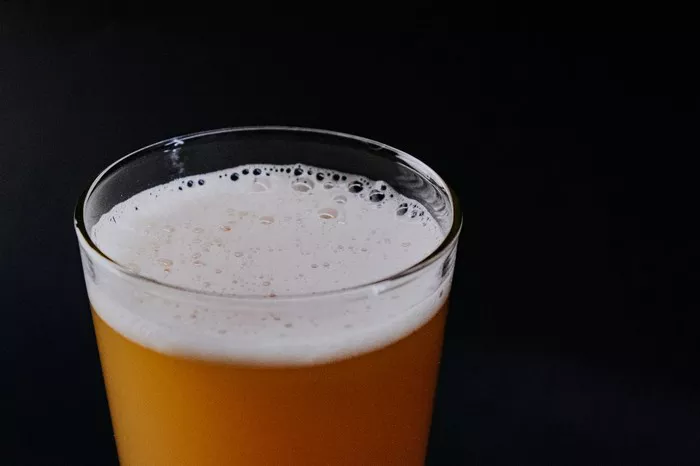In the vast landscape of alcoholic beverages, beer stands as a ubiquitous and diverse category, encompassing a wide array of styles and flavors. Among these styles, malt liquor emerges as a distinct entity, often sparking curiosity and debate among aficionados and casual drinkers alike. Delving into the intricacies of brewing processes, ingredients, and cultural associations unveils the unique characteristics that differentiate malt liquor from its more traditional beer counterparts.
Origins and Historical Context
To grasp the disparity between malt liquor and beer, it’s essential to delve into their origins and historical contexts. Beer, with its ancient roots dating back thousands of years, has evolved into a global phenomenon, deeply embedded in various cultures and traditions. Conversely, malt liquor has a more recent emergence, gaining prominence primarily in the 20th century, particularly in the United States.
Brewing Process and Ingredients
At the heart of the dissimilarity lies the brewing process and the ingredients utilized. While both malt liquor and beer share fundamental components such as water, malted barley, hops, and yeast, their proportions and treatment during brewing diverge significantly. Malt liquor typically undergoes a brewing process that involves higher concentrations of adjuncts, such as corn or rice, alongside malted barley. This results in a brew with a higher alcohol content compared to traditional beers. Additionally, malt liquor often undergoes longer fermentation periods and aging, contributing to its distinct flavor profile and potency.
See Also: Can I Sell Beer Without a Liquor License?
Alcohol Content and Strength
One of the most noticeable disparities between malt liquor and beer is their alcohol content and strength. Malt liquor, characterized by its elevated alcohol by volume (ABV), often exceeds the typical range associated with beer. While the alcohol content of beer generally falls between 4% and 6% ABV, malt liquor can range from 6% to 12% ABV or even higher in some instances. This higher potency lends malt liquor its reputation for delivering a more pronounced and robust intoxicating effect.
Flavor Profile and Taste
Beyond alcohol content, the flavor profile and taste of malt liquor set it apart from conventional beers. Malt liquor tends to exhibit a sweeter and fuller-bodied character, attributed in part to the use of adjuncts and extended brewing processes. The presence of corn or rice adjuncts contributes to a smoother and slightly sweet taste, distinguishing malt liquor from the more balanced and hop-forward flavor profiles often associated with beer. Additionally, malt liquor may exhibit subtle notes of alcohol warmth due to its higher ABV, further enhancing its distinctiveness.
Packaging and Marketing
Another aspect that differentiates malt liquor from beer lies in its packaging and marketing strategies. Malt liquor is often marketed with a focus on its higher alcohol content and potency, targeting demographics seeking a more intense drinking experience. This is reflected in its packaging, which may include larger bottle sizes or cans and bold branding emphasizing its strength. In contrast, beer packaging and marketing typically highlight qualities such as craftsmanship, tradition, and flavor diversity, catering to a broader consumer base with varying preferences and tastes.
Cultural Perceptions and Stereotypes
The perception and stereotypes surrounding malt liquor and beer also contribute to their differentiation. Malt liquor has often been associated with certain demographics and cultural contexts, sometimes carrying negative connotations or stereotypes. Its higher alcohol content and affordability have led to perceptions of malt liquor as a beverage favored by certain socioeconomic groups or associated with urban environments. Conversely, beer enjoys a more diverse and widespread cultural acceptance, celebrated for its versatility, sociability, and connection to culinary traditions worldwide.
Legal and Regulatory Considerations
In addition to cultural perceptions, legal and regulatory considerations further distinguish malt liquor from beer. In many jurisdictions, malt liquor is classified separately from beer due to its higher alcohol content, leading to distinct regulations governing its production, distribution, and sale. These regulations may include restrictions on advertising, packaging requirements, or higher taxes imposed on beverages with elevated alcohol content. Such distinctions underscore the recognition of malt liquor as a distinct category within the broader spectrum of alcoholic beverages.
Social and Consumption Patterns
The social and consumption patterns associated with malt liquor and beer also shed light on their differences. Malt liquor consumption is often characterized by specific occasions or contexts, such as gatherings, parties, or recreational activities where its higher potency may be desired. In contrast, beer consumption is more varied and integrated into everyday social interactions, ranging from casual gatherings to formal dining occasions. The versatility of beer lends itself to diverse consumption patterns, allowing individuals to enjoy it in a wide range of settings and contexts.
Conclusion
In conclusion, the distinction between malt liquor and beer encompasses a myriad of factors, including brewing processes, ingredients, alcohol content, flavor profiles, packaging, cultural perceptions, legal considerations, and consumption patterns. While both beverages share common origins and ingredients, their treatment and presentation result in distinctive sensory experiences and cultural associations. Understanding these differences enriches our appreciation for the diversity and complexity within the world of alcoholic beverages, highlighting the unique characteristics that define malt liquor as a distinct entity alongside traditional beer styles.


